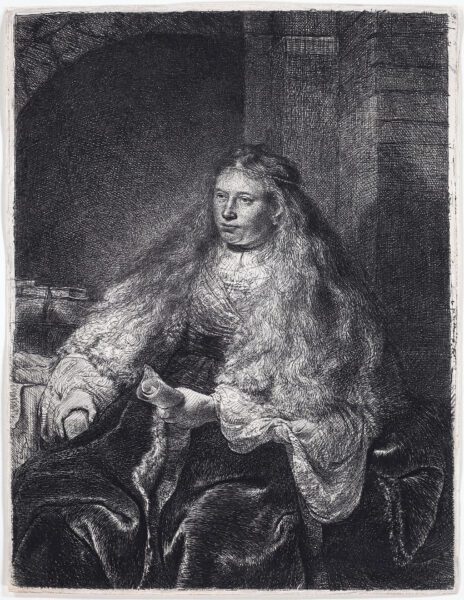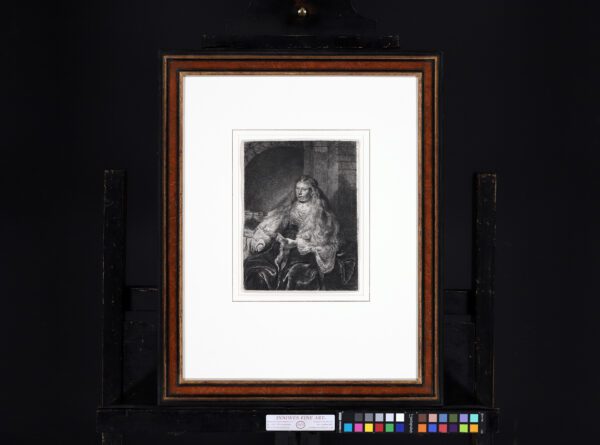“The Great Jewish Bride”, 1635
Etching, engraving and drypoint; 21,6 x 16,8 cm
Signed and dated lower left: ‘R | 1635’
trimmed to or just outside plate mark.
"*" indicates required fields
Notes
The Great Jewish Bride received its title from the Dutch eighteenth-century collector Valerius Röver who believed it portrayed the daughter of Ephraim Bonus, a Jewish doctor Rembrandt painted and etched in later years. However, this is generally contested as, at 36 years old, Bonus would have been unlikely to have a child of this age.
Due to the heavy round face, Rembrandt’s first wife Saskia Uylenburgh is more likely to have been the model for this etching. However, it is unclear what subject matter she was modeling for.
The books piled to the left of the girl hint that the subject could be the Roman goddess Minerva, though the omission of her armour causes this interpretation to also be disputed. Instead, a classical sibyl could have been the intended subject. In a more ominous tone, the rolled-up scroll could identify this as Biblical heroine Esther, holding the decree against the Jews that she is about to quell in a meeting with King Ahasuerus. These intriguing possibilities heighten the dark intensity of this luminous etching.
Literature
Bartsch 340; The New Hollstein Dutch 125: Fifth state (of V);
Nowell-Usticke C 1; plate not in existence.
Provenance
- Private collection, USA
- Private collection, The Netherlands;





